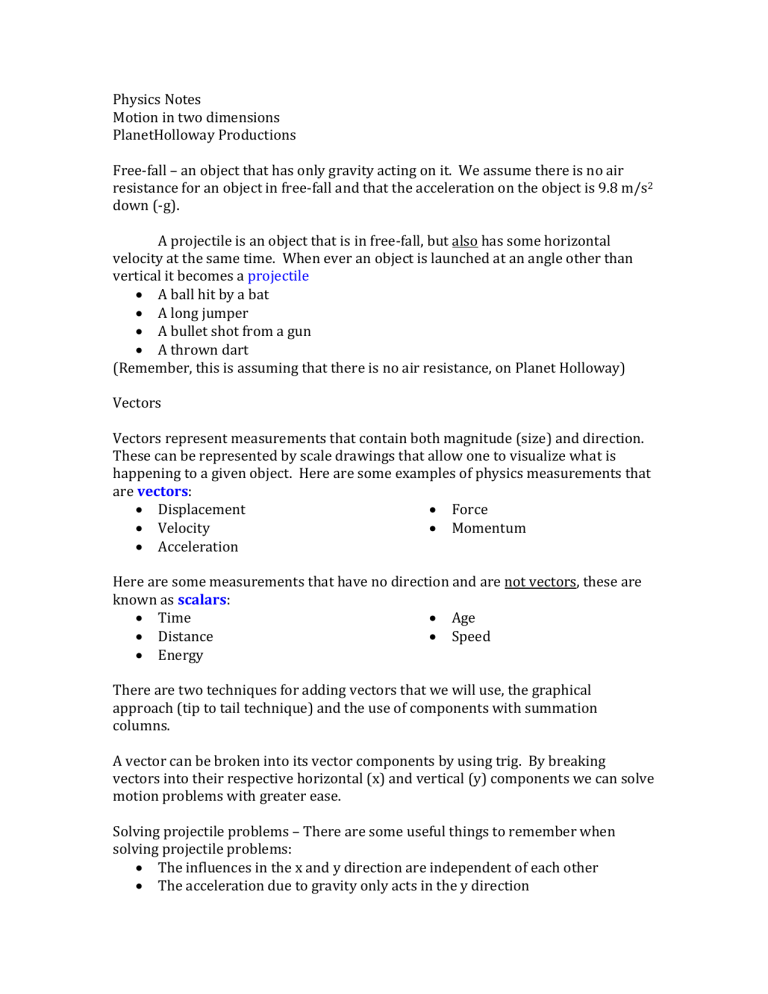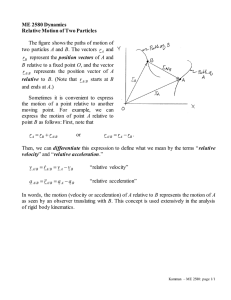Physics Notes Motion in two dimensions PlanetHolloway Productions

Physics Notes
Motion in two dimensions
PlanetHolloway Productions
Free-fall – an object that has only gravity acting on it. We assume there is no air resistance for an object in free-fall and that the acceleration on the object is 9.8 m/s 2 down (-g).
A projectile is an object that is in free-fall, but also has some horizontal velocity at the same time. When ever an object is launched at an angle other than vertical it becomes a projectile
A ball hit by a bat
A long jumper
A bullet shot from a gun
A thrown dart
(Remember, this is assuming that there is no air resistance, on Planet Holloway)
Vectors
Vectors represent measurements that contain both magnitude (size) and direction.
These can be represented by scale drawings that allow one to visualize what is happening to a given object. Here are some examples of physics measurements that are vectors :
Displacement Force
Momentum Velocity
Acceleration
Here are some measurements that have no direction and are not vectors, these are known as scalars :
Time
Distance
Energy
Age
Speed
There are two techniques for adding vectors that we will use, the graphical approach (tip to tail technique) and the use of components with summation columns.
A vector can be broken into its vector components by using trig. By breaking vectors into their respective horizontal (x) and vertical (y) components we can solve motion problems with greater ease.
Solving projectile problems – There are some useful things to remember when solving projectile problems:
The influences in the x and y direction are independent of each other
The acceleration due to gravity only acts in the y direction
The time an object moves in the y direction is equal to the time in the x direction
The velocity in the y direction is zero at the peak of the parabola of the flight
The typical way to solve a projectile problem:
1.
Find the components of the initial velocity
2.
Find the time of the flight (or to the top of the flight) using the y direction only and remembering that a = - g (- 9.8 m/s 2 )
3.
Use the time of flight in the x direction to finish the calculation.
This technique does not always work because the question may be asking for a different quantity, but in general, try to find the time of the flight first using one of the vector components of velocity.
Relative motion
All motion is considered relative in physics. This means that how you look at a situation changes the way you describe the motion. We use the surface of the Earth as our standard frame of reference (vantage point) unless stated otherwise.
When you are riding in a car going 30 m/s past some standing still on the side of the road, it is equally accurate (in physics) to say that they are moving past you in the opposite direction at 30 m/s and that you are still. This may seem weird, but since everything in the universe is moving, there really is no such thing as being at rest or standing still.

